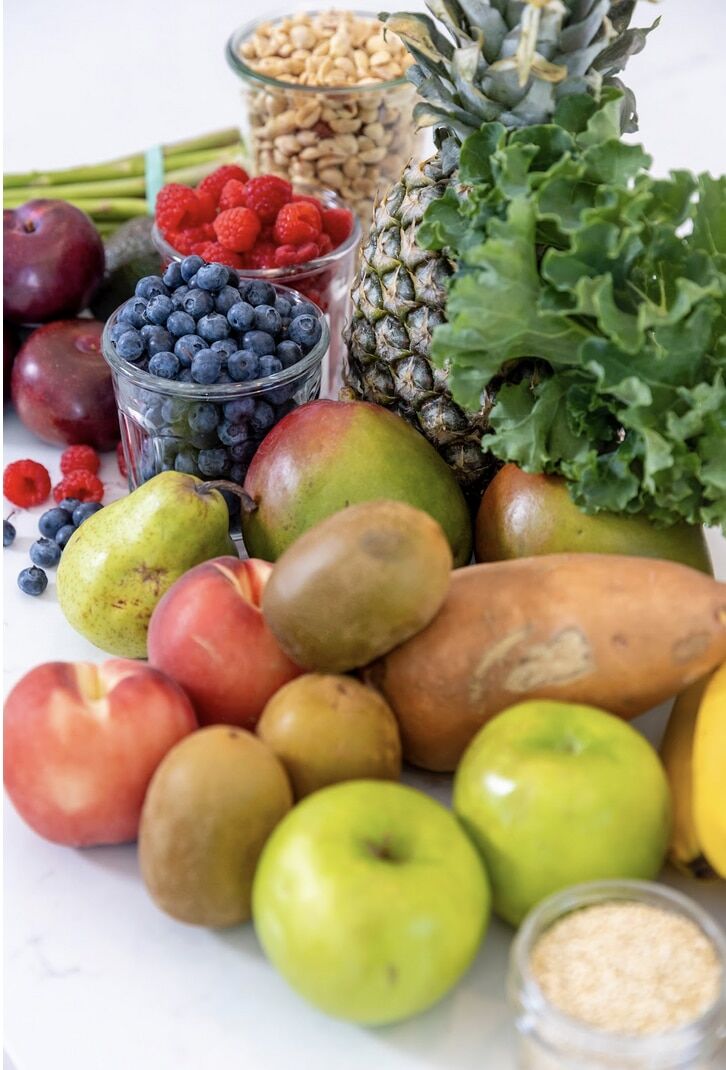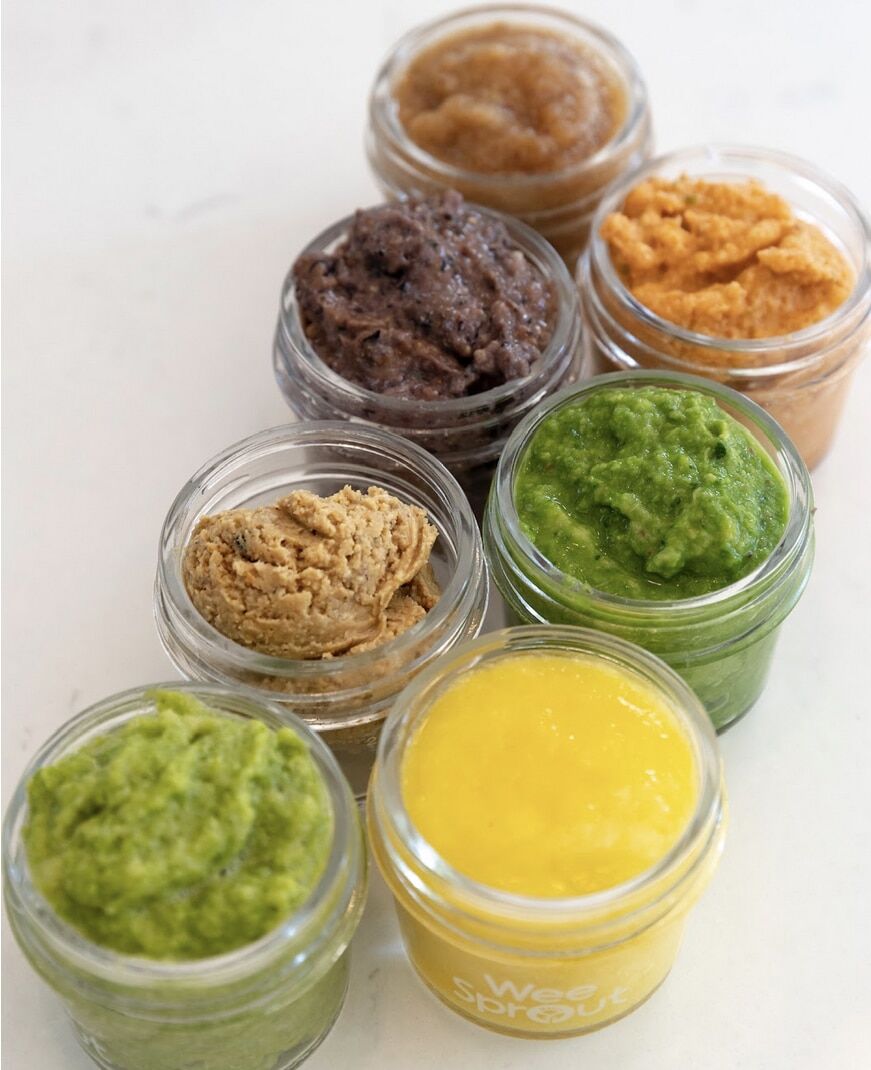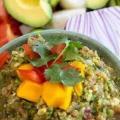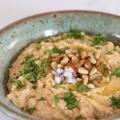In search of homemade baby food and raw purees? We’ve got you covered! The PURE Juicer isn’t only the best cold-press juicer on the market (thanks for making it official, Good Housekeeping!); it’s also an all-in-one appliance capable of producing all kinds of delicious homeground food. Pureés have never been so easy to make, so stay tuned for more. (Pro tip: take a peek at the PURE Juicer manual for a comprehensive list of creative ways to use the juicer.)
Why Raw?
Eating unprocessed food has become quite popular over the last few years, and it’s not hard to see why when you consider all the nutritional benefits you get out of nutrient-dense whole foods. Not only that, many have found additional benefits of eating such foods raw–unpasteurized, untreated, and unrefined in any way, never heated above 104°F. “Raw foods are better quality, therefore you eat less to satisfy your nutritional needs,” says Nicole Malik, vegan author and creator of VegKitchen. “The heat of cooking depletes vitamins, damages proteins and fats, and destroys enzymes which benefit digestion.”
Why Purée?
Pureés are easier to digest than chunks of fruits and vegetables, especially when eating them raw. Pureés are nutrient-rich and great to eat on their own or to add to soups. Making your own pureés to use as baby food is also a healthy and safe way to introduce different flavors and spices to babies. Note: any leftover puree you don’t want to eat can be wrapped and pressed into juice (except for nuts and bananas).

Homemade Raw Purée Tips from Our Favorite PURE Juicer Owners
Mimi Kirk, raw/plant-based chef, coach, and best-selling cookbook author, who is known for the youthful energy a raw diet has brought her at 84 years old, says many moms find success in feeding an all-raw fruit and vegetable diet to their infants in the form of homemade pureed baby food. Some babies, however, prefer to have their purées slightly warmed, at the temperature they might take a bottle. She says to let your baby be your guide on what works best.
Karyn Calabrese, famed raw food restaurateur, who has been a raw vegan for 40+ years, recommends pureed raw fruits and vegetables as a staple of a healthy adult diet. She adds it’s also okay to cook sweet potatoes, which retain their nutritional value, unlike white potatoes.
Personal chef Kim Burrell says “Making your own baby food in the PURE juicer is almost as quick and easy as opening a jar of store bought baby food. However, you are in control of the combination and quality of ingredients!”
She adds this method is also great for the elderly, who may have dentures, missing teeth, or bone deterioration in their mouths. Puréed food is also helpful for anyone who is recuperating from a procedure that makes it difficult for them to chew.
Purées Using the PURE Juicer Chute
For our test kitchen, we used recipes from holistic nutritionist Brittany Mullins of Eating Bird Food (EBF) – see below for the wide range of flavor combos we produced and visit her website for detailed recipes.
We recommend a #3 grid for smooth purées and a #4 or higher for kale, nuts, and everything you’d like to have a chunkier texture. Typically we leave seeds in our fruits (mainly apple seeds) before pressing and grinding, but for baby food we made sure to remove them.
Purées from Our Test Kitchen
- Pear-Peach
- Asparagus-Apple
- Sweet potato-Apple-Cinnamon
- Avocado-Peach-Pineapple-Kale
- Pineapple-Mango
- Blueberry-Banana-Quinoa-Flax
- Peanut butter

Health Benefits
apples: nutrient dense and high in soluble fiber, apples are an excellent source of vitamin C and antioxidants like vitamin E and polyphenols, which are linked to lower risk of heart disease and Type 2 diabetes.
asparagus: low in calories and packed with essential vitamins, minerals and antioxidants, asparagus can improve digestive health and may help reduce your risk of heart disease, high blood pressure and diabetes.
avocado: highly nutritious, avocados are rich in fiber, healthy fats, vitamin C, vitamin E, vitamin B6, potassium, magnesium, and folate.
bananas: containing many essential nutrients, bananas can benefit digestion, heart health, and even aid in weight loss. Bananas are rich in soluble fiber and resistant starch, and these two types of fiber are known to help moderate blood sugar levels after meals and can help regulate your appetite by slowing down the emptying of your stomach.
blueberries: low in calories but high in fiber, vitamin C and vitamin K, blueberries are thought to have one of the highest antioxidant levels of all common fruits and vegetables. The antioxidants in blueberries have been shown to reduce a predominant risk factor for heart disease by preventing oxidative damage to “bad” LDL cholesterol.
cinnamon: anti-viral, antibacterial and antifungal, cinnamon may support both gut health and heart health. Studies show it could also be beneficial to the aging brain, particularly in the case of inhibiting the kinds of proteins that cause Alzheimer’s.
flax: a good source of nutrients including protein, fiber, omega-3 fatty acids, thiamine, and copper, flaxseed may lower cholesterol and is thought to slow cancer growth.
mangoes: high in immune-boosting Vitamin C and fiber, mangoes have been shown to reverse signs of aging and help protect the body from free radicals. Mangoes are also high in Vitamin B6, which aids in serotonin production to regulate our mood and better sleep.
kale: one of the most nutrient-dense foods on the planet, it’s no wonder kale is known as a superfood. Kale is extremely low in calories but has a vast amount of nutrients ranging from vitamin A to magnesium. A single cup can contain up to almost 7 times the amount of the daily recommendation for vitamin K, a compound vital for blood clotting.
peaches: known as a superfood, peaches boost nutrition and help build a strong immune system and a healthy heart, thanks to vitamins and antioxidants, including vitamin C, polyphenols and carotenoids.
pears: known for their high fiber content, which aids in gut health, pears are also anti-inflammatory, packed with vitamins C and K and copper. Red pears may protect heart health, while those in green pears may promote eye health.
peanuts: a low-glycemic food, peanuts are a good source of protein, fiber, and healthy fats. Peanuts provide a surprising number of health benefits such as lowering cholesterol, managing blood sugar levels, and helping you feel satiated.
pineapples: delicious and packed with antioxidants, pineapples are known for their anti-inflammatory properties that can aid in a healthy immune system. Pineapples are a rich source of Vitamin C, manganese, and the compound bromelain, a group of digestive enzymes that may help break down protein and aid with digestion and could help fight against cancer.
quinoa: a seed that is treated like a grain, quinoa offers a number of important nutrients, including folate, magnesium, zinc, and iron. Quinoa is also rich in fiber and protein, which play an important role in helping you feel full.
sweet potatoes: a great source of fiber, vitamins, and minerals, sweet potatoes are also rich in antioxidants, which protect your body from free radicals. Sweet potatoes get their bright orange color from beta-carotene, which the body converts into vitamin A, known to improve eye health.
Sources
8 Impressive Health Benefits of Apples
Top 7 Health Benefits of Asparagus
7 Potential Health Benefits of Avocado
10 Proven Health Benefits of Blueberries
The Top 9 Health Benefits of Flaxseed
Mangoes 101: Nutrition, Benefits, Types, and More
All the Health Benefits of Eating Peaches
9 Health and Nutrition Benefits of Pears
Pineapple: 8 Impressive Health Benefits
8 Evidence-Based Health Benefits of Quinoa
6 Surprising Health Benefits of Sweet Potatoes
Medical Disclaimer
PURE Juicer is a juicing company. We are not doctors or medical experts. All content and information on this blog and website is for informational and educational purposes only, does not constitute medical advice, and does not establish any patient-client relationship by using this website.
Although we strive to provide accurate general information, the information presented here is not a substitute for professional advice. You should not rely solely on this information. Always consult a professional in your area for your health questions and concerns before making any professional, legal, medical, financial, or tax-related decisions.











